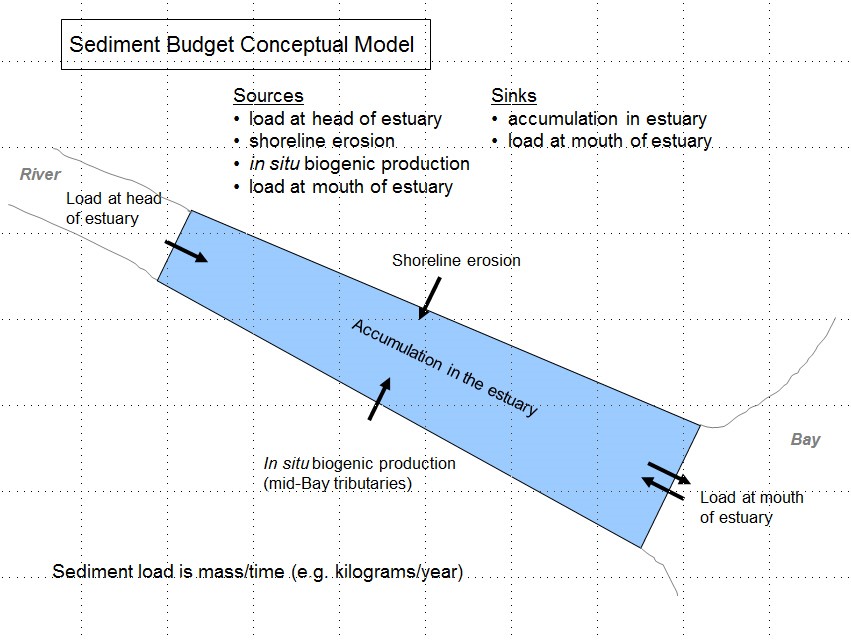Sediment Budgets
Sediment budgets are useful tools for quantifying sediment distribution. A budget consists of sediment sources (areas of erosion) and sinks (areas of deposition). Sediment comprises inorganic and organic particles suspended in the water column. Sources of sediment include inputs from uplands, bank or shore erosion, stream channel erosion, inputs through estuary mouth, and biogenic production. Sinks of sediment include stream or estuary channels or exports through estuary mouth. Understanding the sources and sinks of suspended sediment in Chesapeake Bay tributaries is an important contribution to the Bay sediment budget, as well as an aid to management strategies.

Suspended sediment transport processes, sediment loads and sediment budgets were calculated for the estuarine portions of several major tributaries of Chesapeake Bay in Virginia and Maryland, including the York, Patuxent, and Potomac Rivers. The three rivers exhibit different magnitudes and transport directions of sediment loads. Average estuarine sediment loads show the York and Potomac importing sediment. The York River is highly energetic, redistributing large amounts of sediment within the estuary. Budget estimates show the Patuxent River exporting sediment to the Bay.
Publications
- Herman, J. and C. Friedrichs. 2010. Estuarine Suspended Sediment Loads and Sediment Budgets in Tributaries of Chesapeake Bay. Phase 1: York, Patuxent, and Potomac Rivers. Special Report in Applied and Marine Science and Ocean Engineering No. 420. Center for Coastal Resources Management. Virginia Institute of Marine Science. Gloucester Point, VA. 132 p.
- Herman, J.D. 2012. Estuarine sediment budgets for Chesapeake Bay Tributaries. Coastal and Hydraulics Engineering Technical Note ERDC/CHL CHETN-XIV-23. Vicksburg, MS: US Army Engineer Research and Development Center, Coastal and Hydraulics Laboratory.
